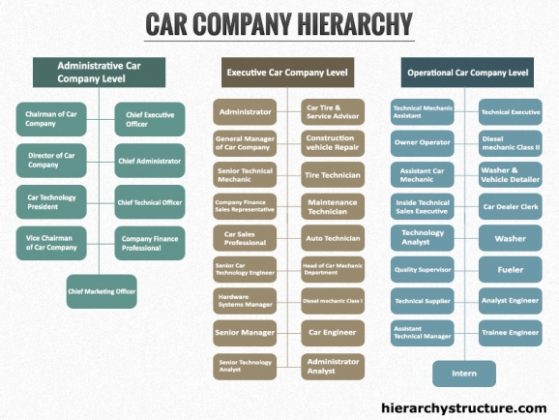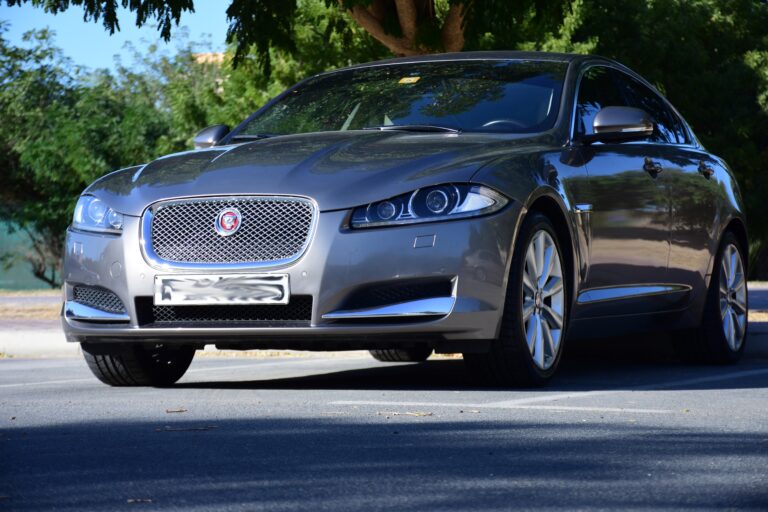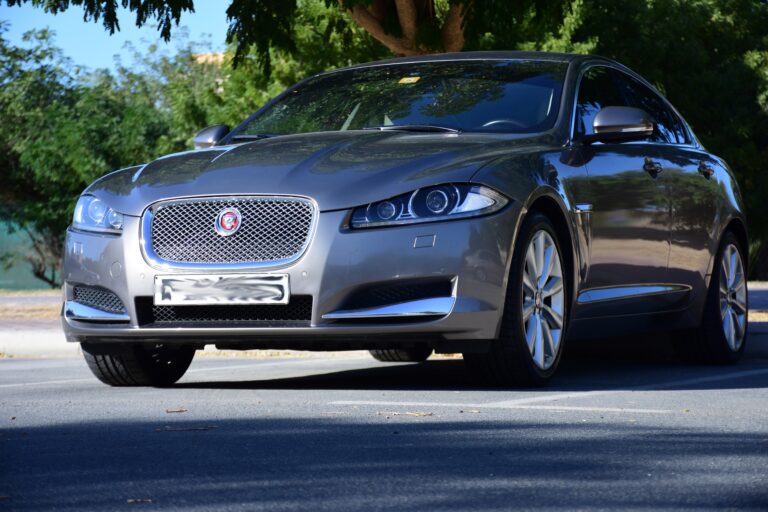Hierarchy Of Car Brands: Understanding the Automotive Stratosphere
Hierarchy Of Car Brands: Understanding the Automotive Stratosphere cars.truckstrend.com
The automotive world is a vibrant tapestry of brands, each vying for a distinct position in the minds of consumers. From the everyday workhorses to the ultimate symbols of luxury and performance, car brands exist within a complex and fascinating "Hierarchy of Car Brands." This hierarchy isn’t merely about price tags; it’s a multifaceted structure shaped by engineering prowess, design philosophy, target demographics, brand heritage, and the perceived value a vehicle offers.
Understanding this hierarchy is crucial for various stakeholders. For consumers, it informs purchasing decisions, setting expectations for quality, performance, and after-sales service. For manufacturers, it dictates brand strategy, market positioning, and competitive dynamics. It’s a dynamic system, constantly shifting with technological advancements, economic trends, and evolving consumer preferences. This comprehensive guide will delve into the layers of this automotive stratification, exploring what defines each tier, how brands navigate it, and what it means for the industry and its buyers.
Hierarchy Of Car Brands: Understanding the Automotive Stratosphere
The Foundations of Automotive Hierarchy: What Defines a Brand’s Position?
A brand’s standing in the automotive hierarchy isn’t arbitrary; it’s a culmination of several intertwined factors that collectively shape its identity and market perception.
-
Quality, Reliability & Craftsmanship: At the core, a brand’s position is heavily influenced by the intrinsic quality of its vehicles. This encompasses the meticulousness of manufacturing, the durability of components, and the overall reliability over time. Higher-tier brands often employ superior materials, more stringent quality control, and artisanal craftsmanship in their interiors and exteriors, leading to a palpable sense of luxury and longevity.
-
Performance & Innovation: From raw horsepower to sophisticated handling dynamics, performance is a key differentiator. Brands at the pinnacle of the hierarchy often push the boundaries of automotive engineering, developing cutting-edge powertrains, advanced suspension systems, and innovative safety and infotainment technologies. Their vehicles are frequently testbeds for future industry standards.

-
Luxury & Exclusivity: Beyond mere quality, luxury brands emphasize exclusivity, bespoke options, and an unparalleled ownership experience. This can include personalized services, limited production runs, and unique design elements that cater to a discerning clientele seeking prestige and individuality. The feeling of owning something rare and special contributes significantly to a brand’s elevated status.

Brand Heritage & Image: A long, storied history of innovation, racing success, or association with influential figures can imbue a brand with immense prestige. Brands like Ferrari, Porsche, and Rolls-Royce benefit from decades of cultivating an aspirational image, where ownership signifies a certain lifestyle or achievement. Even newer brands strategically build an image of innovation or environmental responsibility to carve out their niche.
-
Pricing Strategy & Target Market: Price is a direct reflection of a brand’s perceived value and its intended audience. Economy brands target budget-conscious buyers, while mainstream brands aim for a broad appeal with a balance of features and affordability. Premium and luxury brands set higher price points to reflect their superior attributes, exclusive features, and the status associated with their name. Each brand meticulously tailors its product offerings and marketing to resonate with its specific target demographic.
-
After-Sales Service & Ownership Experience: The journey doesn’t end with the purchase. The quality of after-sales service, warranty coverage, dealership experience, and the ease of maintenance significantly influence a brand’s perceived value. Premium and luxury brands often provide white-glove services, personalized attention, and extensive warranty programs that enhance the overall ownership experience, further solidifying their high-tier position.

Deciphering the Tiers: A Multi-Layered System
While not always rigid, the automotive hierarchy can generally be segmented into several distinct tiers, each with its own characteristics and appeal.
1. The Pinnacle: Ultra-Luxury & Hypercar Brands
- Examples: Bugatti, Koenigsegg, Pagani, Rolls-Royce, select Ferrari and Lamborghini models.
- Characteristics: These brands represent the absolute zenith of automotive engineering and luxury. Vehicles are often hand-built, produced in extremely limited numbers, and command stratospheric prices. They prioritize bespoke craftsmanship, groundbreaking performance, and unparalleled exclusivity. Ownership is a statement of ultimate wealth and connoisseurship.
2. The Elite: Luxury & Premium Brands
- Examples: Mercedes-Benz, BMW, Audi, Lexus, Porsche, Land Rover, Tesla, Maserati, Aston Martin.
- Characteristics: These are the aspirational brands, known for combining high-quality materials, advanced technology, strong performance, and sophisticated design. They offer a significant step up in refinement and status from mainstream brands, providing a premium ownership experience without reaching the bespoke exclusivity of the ultra-luxury tier. Many offer performance sub-brands (e.g., AMG, M, RS) to cater to enthusiasts.
3. The Mainstream: Volume & Mass-Market Brands
- Examples: Toyota, Honda, Volkswagen, Ford, Hyundai, Kia, Nissan, Mazda, Chevrolet, Subaru.
- Characteristics: This is the largest segment, catering to the vast majority of car buyers. These brands focus on reliability, practicality, fuel efficiency, safety, and a broad range of models to suit diverse needs and budgets. While they may not offer the same level of luxury or performance as higher tiers, they provide excellent value, widespread availability, and dependable ownership.
4. The Value Proposition: Economy & Budget Brands
- Examples: Dacia (Europe), some models from Mitsubishi or Chevrolet in certain markets, emerging budget brands from China or India.
- Characteristics: These brands prioritize affordability above all else. They offer basic, functional transportation with a focus on low purchase price and running costs. While features and materials may be simpler, they provide essential mobility for budget-conscious consumers.
Nuances and Crossover:
It’s important to note that the lines can blur. A mainstream brand like Toyota has its luxury arm (Lexus), and Hyundai has Genesis. Similarly, a premium brand like Porsche offers models ranging from luxury SUVs to pure sports cars. Performance divisions (e.g., Mercedes-AMG, BMW M) create sub-hierarchies within brands, offering elevated performance and exclusivity.
The Dynamic Nature of Hierarchy: Shifts and Strategies
The automotive hierarchy is not static; it’s a constantly evolving landscape shaped by market forces, innovation, and strategic decisions.
Upward Mobility: The Ascent of Challengers
Brands often strive to move up the hierarchy, enhancing their image and market share. Hyundai and Kia, for example, have made remarkable strides in quality, design, and technology over the past two decades, challenging established mainstream and even premium brands. Hyundai’s launch of Genesis as a dedicated luxury brand is a prime example of a concerted effort to climb the ladder. Strategies include:
- Significant R&D Investment: Developing cutting-edge powertrains, autonomous driving tech, and advanced infotainment.
- Design Overhaul: Hiring top designers to create more appealing and distinctive aesthetics.
- Premium Materials & Craftsmanship: Elevating interior quality, fit, and finish.
- Targeted Marketing & Branding: Shifting perception through aspirational campaigns and celebrity endorsements.
- Disruptive Innovation: Tesla, for instance, entered the market as a high-tech, luxury EV brand, disrupting established players with its focus on electric performance and software-driven features.
Downward Pressure & Diversification:
Conversely, some brands might face challenges maintaining their position due to intense competition, economic downturns, or changing consumer preferences. This can lead to:
- Dilution of Brand Image: Expanding into lower-priced segments can sometimes dilute a brand’s premium perception if not managed carefully.
- Intense Competition: The proliferation of high-quality vehicles across all segments means brands constantly need to innovate to stay relevant.
- Globalization: As markets mature, local preferences and competition can force brands to adapt their offerings, sometimes leading to more value-oriented products.
The EV Revolution’s Impact:
The transition to electric vehicles (EVs) is significantly reshaping the hierarchy. New players like Rivian and Lucid have emerged directly into the premium/luxury EV space, leveraging technology and sustainability as their core differentiators. Traditional luxury brands are heavily investing in electrification to maintain their positions, while mainstream brands are making EVs accessible to a broader audience, potentially blurring lines as EV technology democratizes.
Practical Advice for Consumers and Industry Watchers
Understanding the car brand hierarchy offers valuable insights for both prospective car buyers and those interested in automotive industry trends.
For Consumers: Making Informed Decisions
- Define Your Priorities: Before looking at brands, understand what you value most: affordability, reliability, luxury, performance, safety, or technology. This will help you narrow down the relevant tiers.
- Look Beyond the Badge: While brand reputation is important, individual models within a brand’s lineup can vary significantly. Don’t assume all cars from a "luxury" brand are perfect, or all "mainstream" cars are basic. Research specific models, read reviews, and check reliability ratings.
- Consider Total Cost of Ownership (TCO): A higher-tier car might have a higher purchase price, but also potentially higher insurance, maintenance, and repair costs. Conversely, some mainstream brands offer excellent resale value. Factor in the long-term financial implications.
- Test Drive Across Tiers: If possible, test drive vehicles from different tiers that broadly fit your needs. This hands-on experience can reveal subtle differences in ride quality, interior refinement, technology integration, and overall driving dynamics that static comparisons can’t capture.
- Leverage Sub-Brands & Performance Divisions: If you like a mainstream brand’s reliability but desire more luxury or performance, explore their premium sub-brands (e.g., Lexus, Genesis, Acura) or performance divisions (e.g., Honda Type R, Ford ST/RS).
For Industry Watchers & Enthusiasts: Analyzing the Landscape
- Monitor R&D Spending: High investment in research and development often signals a brand’s ambition to innovate and potentially move up the hierarchy.
- Observe Design Language Shifts: Significant changes in a brand’s design philosophy can indicate a strategic repositioning towards a more premium or modern aesthetic.
- Track Market Share & Sales Trends: Shifts in market share can reveal which brands are gaining or losing traction within their respective tiers.
- Analyze New Model Introductions: Pay attention to where new models are positioned in terms of price, features, and target audience. Are mainstream brands pushing into premium territory? Are luxury brands diversifying into more accessible segments?
- Understand Platform Sharing & Acquisitions: Many brands, even competitors, share platforms and components (e.g., Volkswagen Group). This can influence quality, cost, and overall brand differentiation. Mergers and acquisitions can also reshape the competitive landscape and brand portfolios.
Table: Illustrating the Car Brand Hierarchy (Representative Examples & Characteristics)
| Hierarchy Tier | Representative Brands (Examples) | Defining Characteristics | Typical Price Range (USD – New Models) |
|---|---|---|---|
| 1. Ultra-Luxury / Hypercar | Rolls-Royce, Bugatti, Pagani, Koenigsegg | Exclusivity, bespoke craftsmanship, extreme performance, limited production, unparalleled prestige, cutting-edge materials, ultimate luxury experience. | $500,000 – $10,000,000+ (often millions) |
| 2. Luxury / Premium | Mercedes-Benz, BMW, Audi, Lexus, Porsche, Tesla, Range Rover, Volvo, Genesis, Acura | High quality, advanced technology, strong performance, sophisticated design, premium materials, status symbol, extensive feature sets, aspirational. | $40,000 – $250,000+ (depending on model & options) |
| 3. Mainstream / Volume | Toyota, Honda, Volkswagen, Ford, Hyundai, Kia, Mazda, Nissan, Subaru, Chevrolet | Reliability, practicality, good value, broad appeal, diverse model range, focus on efficiency, safety, and everyday usability. | $25,000 – $60,000+ (depending on model & trim) |
| 4. Economy / Budget | Dacia, certain base models of mainstream brands (e.g., Mitsubishi Mirage), emerging market brands | Affordability, basic functionality, focus on low purchase price and running costs, essential features, simplicity. | $15,000 – $25,000+ (can be lower in some markets) |
Note: Price ranges are highly illustrative and can vary significantly based on model, trim level, optional features, region, and market conditions. These tiers are general guidelines, and some brands may have models that span across adjacent categories.
Conclusion
The Hierarchy of Car Brands is far more than a simple ranking; it’s a dynamic framework that defines the automotive industry’s structure, influences consumer behavior, and shapes manufacturers’ strategic decisions. It’s a testament to the diverse needs and aspirations of car buyers worldwide, from those seeking basic, reliable transportation to those desiring the ultimate in luxury and performance.
While elements like quality, innovation, and brand heritage form the bedrock of this hierarchy, it remains an ever-evolving system. Technological breakthroughs, especially in electrification and autonomous driving, alongside shifting consumer values, continuously challenge and redefine brand positions. Understanding this intricate hierarchy empowers consumers to make more informed choices aligned with their values and budgets, while offering industry observers a crucial lens through which to analyze the exciting and competitive world of automobiles.
Frequently Asked Questions (FAQ)
Q1: Is the car brand hierarchy fixed, or does it change over time?
A1: The hierarchy is dynamic and constantly evolving. Brands can move up or down based on their strategic investments in R&D, design, quality improvements, marketing efforts, and the overall perception of their products in the market. Economic shifts and new technologies (like EVs) also play a significant role in reshaping the landscape.
Q2: How do electric vehicles (EVs) fit into the traditional hierarchy?
A2: EVs are actively disrupting the traditional hierarchy. New EV-only brands (e.g., Tesla, Rivian, Lucid) have entered directly into premium or luxury tiers by leveraging advanced technology and sustainable branding. Established brands are also launching high-end EVs, while some mainstream brands are making EVs more accessible, potentially blurring the lines between tiers as EV technology becomes more common.
Q3: Does a higher-tier brand always mean a "better" car?
A3: Not necessarily. "Better" is subjective and depends on individual priorities. A higher-tier brand typically offers superior materials, more advanced technology, and a more refined driving experience. However, a mainstream brand might offer better reliability, lower maintenance costs, or better value for money for many consumers. The "best" car is the one that best meets your specific needs, budget, and preferences.
Q4: Can a mainstream brand launch a luxury car and succeed?
A4: Yes, this has happened successfully. Toyota launched Lexus in the 1980s, and Honda launched Acura, both creating separate luxury divisions that have become highly respected premium brands. More recently, Hyundai launched Genesis. The key to success is creating a distinct brand identity, investing heavily in quality, design, and a premium ownership experience that differentiates it entirely from the parent mainstream brand.
Q5: What’s the main difference between a "premium" brand and a "luxury" brand?
A5: The distinction can be subtle but generally lies in the level of exclusivity, bespoke options, and overall extravagance. "Premium" brands (e.g., BMW, Audi, Mercedes-Benz) offer high quality, advanced features, and a refined experience that elevates them above mainstream cars. "Luxury" brands (e.g., Rolls-Royce, Bentley) go a step further, emphasizing ultimate craftsmanship, bespoke customization, extreme exclusivity, and often an even higher price point, catering to a clientele seeking unparalleled prestige and personalized ownership.




